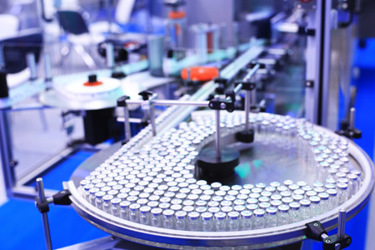An Analysis Of ICH Draft Guidance Q13: Continuous Manufacturing Of Drug Substance And Drug Products
By Mark Mitchell, principal engineer, Pharmatech Associates

The International Council for Harmonisation (ICH) published a draft version of ICH Q13, Continuous Manufacturing of Drug Substances and Drug Products, for public commentary on July 27, 2021. This long-awaited guideline is an extension of the series of existing quality guidelines including quality by design (Q8, Q9, Q10), drug substances (Q11), and, most recently, product life cycle management (Q12). Its purpose is to harmonize the regulatory and quality perspectives of ICH members including the FDA (U.S.), EMA (EC), and PMDA (Japan). This continuous manufacturing guideline provides both opportunities and challenges for pharmaceutical manufacturers seeking increased capacity, lower costs, and a predictable supply chain.
Per ICH Q13, continuous manufacturing of drug substances and drug products “involves the continuous feed of input materials into, the transformation of in-process materials within, and the concomitant removal of output materials from a manufacturing process.” The guideline focuses on integrated aspects of multiple unit operations that may be exclusively continuous unit operations or a combination of batch and continuous unit operations that operate in a continuous mode. The guideline also covers the complete integration in which drug substance and drug product are incorporated into a single continuous manufacturing process.
ICH And FDA
The ICH Q13 guideline is presented in two parts: the main body and the annexes (I through V).
Previously, the FDA drafted Quality Considerations for Continuous Manufacturing, Guidance for Industry in February 2019. Evident of the FDA’s contribution to the ICH guideline, the main body of Q13 covers similar topics, specifically:
- Definition of Batch/Lot
- Control Strategy (Process Dynamics, Material Characterization, Equipment Design, Process Monitoring and Control, Material Diversion, and Process Modeling)
- Changes in Production Output (Scale-up Considerations)
- Process Validation
- Pharmaceutical Quality Systems
- Location of Continuous Manufacturing Specific Information in the eCTD
Minor differences do occur. For example, the FDA guidance references the CFR and other FDA guidances, while the ICH Q13 guideline references other ICH resources for such topics as the definition of batch/lot and for process validation. It can be expected that there may be some alignment and clarification in the FDA guidance once the ICH Q13 is closer to an approved state.
Continuous Manufacturing Requires QbD Proficiency
For those choosing to implement a continuous manufacturing process, equipment and technologies not traditionally used in pharmaceutical manufacturing are required. Although continuous manufacturing processes have been used in chemical and food manufacturing for many decades, this equipment, process, and technology experience is lacking in our industry. One area is the understanding of the process dynamics and the characterization of residence time distributions (RTD). Due to what we can refer to as a lack of process knowledge for this type of unit operations, a proficiency in quality by design (ICH Q8/Q9/10) methodologies is paramount. The Q13 guideline recognizes the importance of sophisticated process models and the use of in silico experimentation. Ongoing comparison between models and actual process performance continues throughout the product life cycle.
The guideline notes that extensive input material characterization beyond what has been typically done for batch process is needed. Continuous manufacturing systems may be sensitive to disturbances caused by input materials leading to nonconforming product. Input material specifications may have to be more elaborate (such as three-tier particle size distribution, bulk density) for continuous blending processes in solid dose manufacturing.
Monitoring And Control Techniques
The requirements of real-time process monitoring and control of continuous manufacturing will likely require the implementation of process analytical technologies (PAT). Gravimetric (such as loss-in-weight feeders, or LIWF) and spectrophotometric methods (such as near-infrared, or NIR) are more familiar technologies with relatively fast data collection times. This is particularly important for the concept of material diversion, where nonconforming material is separated from the continuous process stream in real time. However, more complex analytical methods (such as online high-performance liquid chromatography, or HPLC) may require process modifications such as surge tanks to allow sufficient time for the data to be analyzed and a diversion decision to be implemented.
Continuous manufacturing also may allow for the concept of real time release testing (RTRT) in which in-process results are used in lieu of sampling each batch and holding for release test results. Many compendial methods (such as dissolution for solid dose) are currently not suitable for the RTRT strategy and in-process methods must be validated to comparable offline laboratory methods (e.g., NIR method for assay validated against HPLC method, Raman spectroscopy).
For anyone preparing eCTD filings, the Q13 guideline provides a useful table indicating where continuous manufacturing information should be located.
Five Annexes
The Q13 guideline provides four useful annexes with illustrated examples of the expectations and consideration of continuous manufacturing:
- Annex I: Continuous Manufacturing of Drug Substances for Chemical Entities
- Annex II: Continuous Manufacturing for Drug Products (Solid Dose)
- Annex III: Continuous Manufacturing of Therapeutic Protein Drug Substances
- Annex IV: Integrated Drug Substance and Drug Product Continuous Manufacturing
Of these, Annexes I and II are the most likely candidates for the adoption of continuous manufacturing. Drug substance manufacturing has more typically used process technology in the manufacturing of bulk chemicals for many years. Integrated drug substance and drug product approaches may be intriguing, but drug substance and drug product manufacturers have developed very specific and separate skillsets. Also, the drug product manufacturers have often chosen to import drug substances from multiple suppliers.
The fifth annex, Annex V: Perspectives on Managing Disturbances, describes how disturbances should be monitored such that decisions can be made on material diversion.
Summary
The ICH Q13 guideline adequately outlines the challenges and expectations of continuous manufacturing of drug substances and drug products. Most hurdles for implementation are not regulatory, but technological and procedural. Overcoming these hurdles lies with pharmaceutical manufacturers in establishing standard approaches for equipment design, control strategies, PAT instrumentation and validation, material diversion procedures, and RTRT. Proficiencies in these areas are applicable to both continuous and batch processing.
Bill Gates in his second rule of automation warned, “Automation applied to an inefficient operation will magnify the inefficiency.” This caution is not a warning against automation — in this context, continuous manufacturing applies automation — but rather the need for process understanding in order to reap the advantage of that automation.
Editor’s Note: The ICH Expert Working Group will have a meeting in November 2021 to discuss comments received, with plans to sign off on the final guidance document in November 2022.
About the Author:
 Mark Mitchell is a principal engineer at Pharmatech Associates, a USP company. He is a specialist in quality by design and implementation of the FDA process validation guidance and ICH Q8/9/10 fo new and legacy products. He works on process engineering, facility design, statistical applications, quality remediation, and CMC preparation for NDAs for clients with aseptic, solid oral dosage forms, biological, and combination products. Mitchell has authored several articles on statistical applications for process validation and technology transfer. He holds a patent in aseptic mixing technology, and a BS in chemical engineering from Rensselaer Polytechnic Institute.
Mark Mitchell is a principal engineer at Pharmatech Associates, a USP company. He is a specialist in quality by design and implementation of the FDA process validation guidance and ICH Q8/9/10 fo new and legacy products. He works on process engineering, facility design, statistical applications, quality remediation, and CMC preparation for NDAs for clients with aseptic, solid oral dosage forms, biological, and combination products. Mitchell has authored several articles on statistical applications for process validation and technology transfer. He holds a patent in aseptic mixing technology, and a BS in chemical engineering from Rensselaer Polytechnic Institute.
